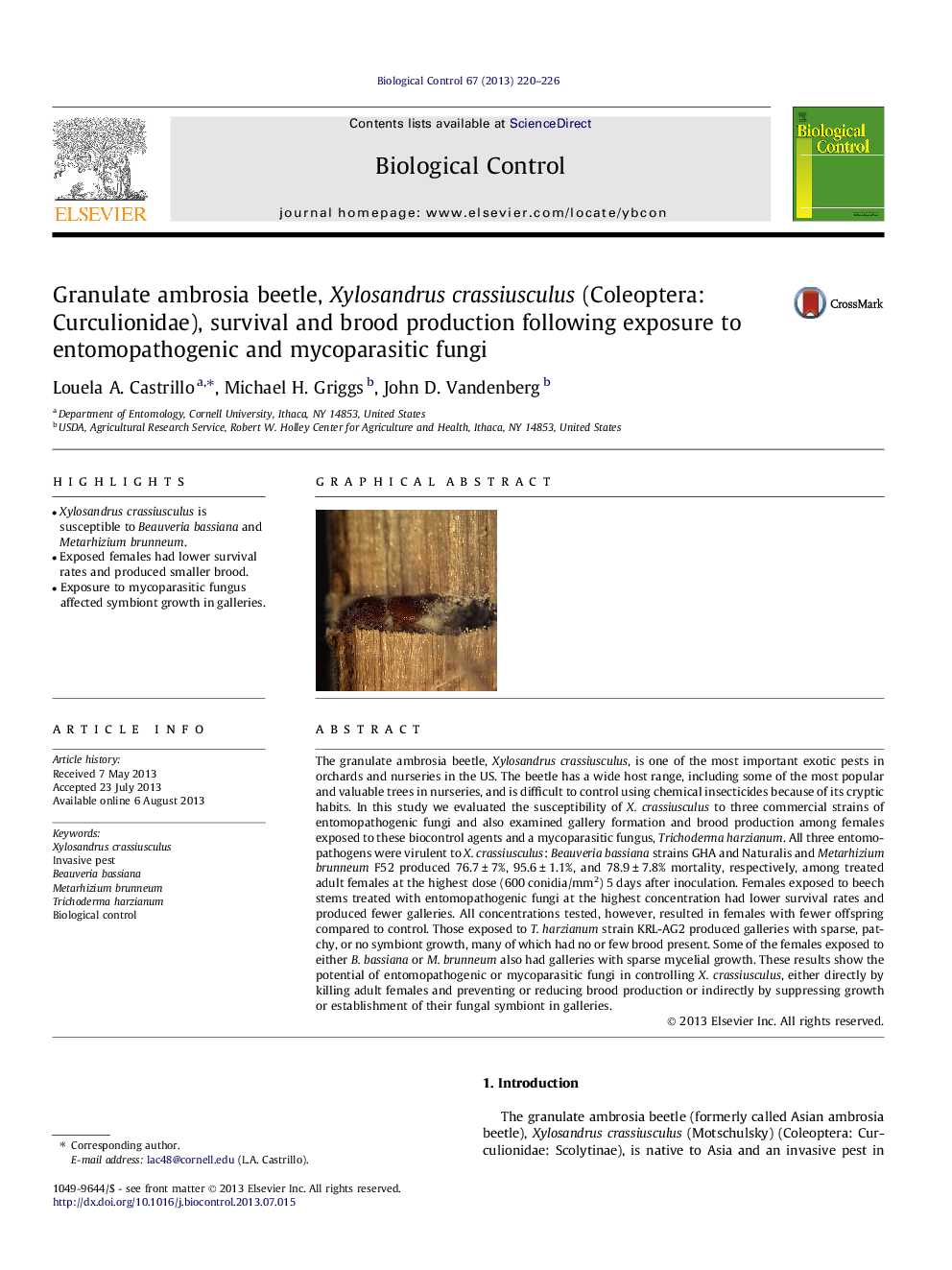| کد مقاله | کد نشریه | سال انتشار | مقاله انگلیسی | نسخه تمام متن |
|---|---|---|---|---|
| 4504054 | 1321054 | 2013 | 7 صفحه PDF | دانلود رایگان |

• Xylosandrus crassiusculus is susceptible to Beauveria bassiana and Metarhizium brunneum.
• Exposed females had lower survival rates and produced smaller brood.
• Exposure to mycoparasitic fungus affected symbiont growth in galleries.
The granulate ambrosia beetle, Xylosandrus crassiusculus, is one of the most important exotic pests in orchards and nurseries in the US. The beetle has a wide host range, including some of the most popular and valuable trees in nurseries, and is difficult to control using chemical insecticides because of its cryptic habits. In this study we evaluated the susceptibility of X. crassiusculus to three commercial strains of entomopathogenic fungi and also examined gallery formation and brood production among females exposed to these biocontrol agents and a mycoparasitic fungus, Trichoderma harzianum. All three entomopathogens were virulent to X. crassiusculus: Beauveria bassiana strains GHA and Naturalis and Metarhizium brunneum F52 produced 76.7 ± 7%, 95.6 ± 1.1%, and 78.9 ± 7.8% mortality, respectively, among treated adult females at the highest dose (600 conidia/mm2) 5 days after inoculation. Females exposed to beech stems treated with entomopathogenic fungi at the highest concentration had lower survival rates and produced fewer galleries. All concentrations tested, however, resulted in females with fewer offspring compared to control. Those exposed to T. harzianum strain KRL-AG2 produced galleries with sparse, patchy, or no symbiont growth, many of which had no or few brood present. Some of the females exposed to either B. bassiana or M. brunneum also had galleries with sparse mycelial growth. These results show the potential of entomopathogenic or mycoparasitic fungi in controlling X. crassiusculus, either directly by killing adult females and preventing or reducing brood production or indirectly by suppressing growth or establishment of their fungal symbiont in galleries.
Female Xylosandrus crassiusculus infected with Beauveria bassiana strain GHA.Figure optionsDownload as PowerPoint slide
Journal: Biological Control - Volume 67, Issue 2, November 2013, Pages 220–226